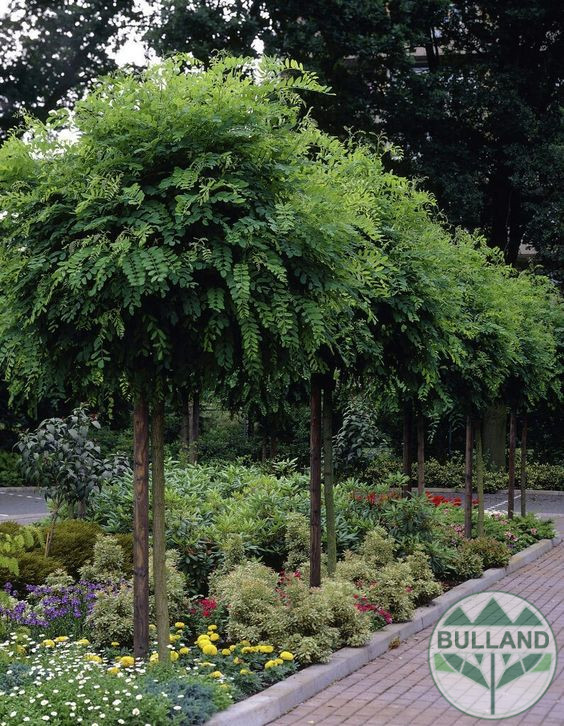Globular Acacia, (Robinia pseudoacacia ‘Umbraculifera’ 12/14)
270.00 лв.
Globular Acacia, (Robinia pseudoacacia ‘Umbraculifera’ 12/14)
Height 200/250 cm
Globular Acacia usually grows in sunny places. It is resistant to low and high temperatures, tolerates polluted air in cities well. It grows best on fertile soils. If the soil is calcareous, the tree gets sick and develops poorly. It is used to strengthen steep slopes. The height of the graft is about 2-2.5m.
Globular Acacia grows very fast. It reaches a height of up to 25 m, and aged up to 100 years. With the help of its strongly grown and deep roots, it draws food from the soil. Acacia roots have a great ability to produce shoots, if the stem is cut off. The wood is hard to rot, as outdoors lasts up to 80 years.
Acacia is a valuable honey species. From it, in the months of May-June, bees collect nectar from which they make acacia honey. More honey is obtained from older trees. That is right, because even in drier weather the developed and deep-reaching root system of the acacia reaches wetter layers of the soil and thus secretes larger amounts of nectar. Acacia growth is fast.
It is characteristic of acacia honey, that it does not crystallize for a long time - until 2 years. Transparent and pale greenish in color, it is one of the first honeys, which are mined throughout the year in many regions of the country. There are especially many acacia plantations in Northern Bulgaria and along the river. Danube. The release of nectar from acacia trees is not constant. It depends on the temperature, as the optimal one is 24 degrees and the presence of precipitation, which wash the nectar. Acacia flowering is particularly adversely affected by the frequently observed cooling of the weather after an initial warming. In many of the areas, where there is acacia, frosts are also observed, which damage the colors.



